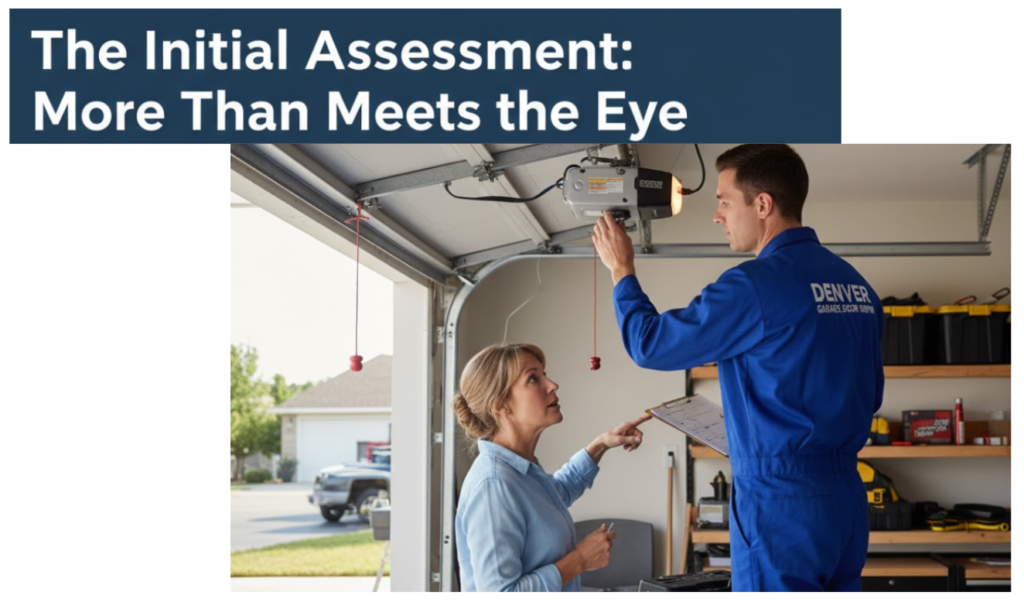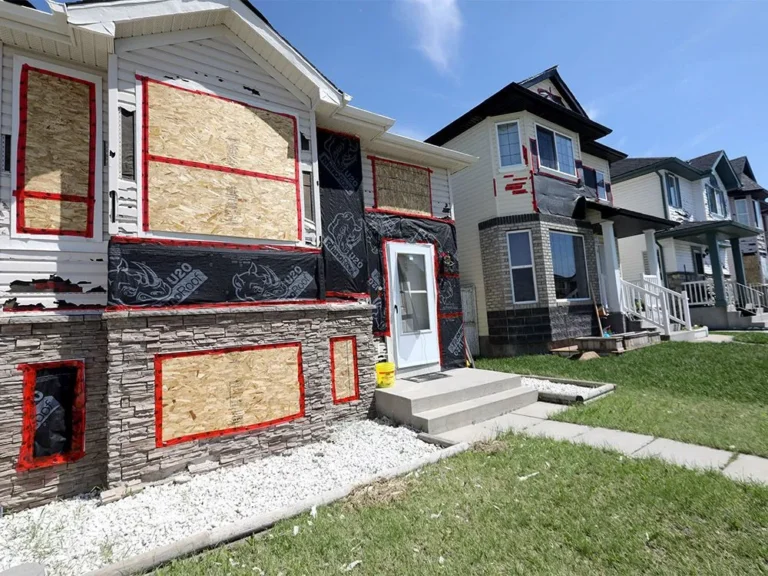Inside a Garage Door Opener Repair: What to Expect
If you’ve ever pressed your garage remote and heard grinding instead of smooth lifting, you’re not alone. According to HomeAdvisor, garage door opener repairs are one of the top five most requested home service calls in the U.S. Yet most homeowners have no idea what really happens during a repair, or what a technician actually checks under the hood.
Let’s look at the process and help you understand what technicians do when they come to fix your garage door opener.
The Initial Assessment: More Than Meets the Eye
When a repair technician arrives at your home, the first thing they do isn’t immediately start taking things apart. Professional services, like those offering Denver Garage Door Opener Repair, begin with a comprehensive diagnostic assessment. This involves testing the opener with the remote, wall switch, and manual operations to pinpoint exactly where the problem originates.

The technician will listen carefully to the sounds your opener makes, or doesn’t make. A humming noise might indicate a problem with the drive gear, while clicking sounds could point to electrical issues. Complete silence often suggests power supply problems or a burned-out motor.
This phase is crucial because garage door openers are complex systems with multiple components that must work in harmony.
Understanding the Components Being Evaluated
Your garage door opener isn’t just a single unit, it’s an interconnected system.
During a repair visit, technicians examine several key components:
The Motor Unit: This is the heart of your opener, housed in the box mounted to your ceiling. The motor powers the entire operation, and if it’s failing, you might notice the door moving slower than usual or stopping mid-cycle.
The Drive System: Whether your opener uses a chain, belt, or screw drive, this component transfers power from the motor to move your door. Worn chains, loose belts, or damaged screws are common culprits that require replacement or adjustment.
Safety Sensors: Those small sensors near the bottom of your door tracks aren’t optional, they’re federally mandated safety features. If misaligned or malfunctioning, they’ll prevent your door from closing properly, leaving homeowners frustrated and confused about why their door keeps reversing.
The Circuit Board: Modern openers rely on sophisticated electronics. When the circuit board fails, you might experience erratic behavior, such as the door opening or closing randomly, or the remote suddenly not working despite fresh batteries.
What Actually Gets Fixed or Replaced
Once the diagnosis is complete, the real work begins. According to Forbes Home, the most common garage door opener repairs involve worn-out drive gears, faulty limit switches, and damaged circuit boards. These are components that control how smoothly your door moves and when it stops.
Here’s what commonly happens during garage door opener repairs:
Gear Replacement: One of the most frequent repairs involves replacing the drive gear. This plastic gear can wear down over time, especially in openers that see heavy daily use. You’ll know this is the issue if you hear the motor running but the door doesn’t move. The repair involves opening the motor housing, removing the worn gear, and installing a new one, a process that typically takes 30 to 60 minutes.
Sensor Realignment and Replacement: Misaligned sensors are often fixed by simply adjusting their position until the indicator lights show they’re properly communicating. However, if the sensors are damaged or the wiring is faulty, they’ll need complete replacement. This is a relatively straightforward repair that can make an immediate difference.
Circuit Board Repairs or Replacement: When electronic components fail, technicians must determine whether the circuit board can be repaired or needs full replacement. This involves testing various circuits and connections, and sometimes soldering new components onto the board. In many cases, especially with older models, complete board replacement is more cost-effective.
Drive System Adjustments: Loose chains or belts can cause jerky operation and excessive noise. Technicians will adjust the tension to manufacturer specifications, ensuring smooth operation. If the chain or belt is severely worn or damaged, complete replacement becomes necessary.
In many cases, technicians also replace photo-eye sensors, belts, or trolley assemblies that wear down over time. These parts might seem small, but they’re responsible for 70% of all opener malfunctions, according to industry service data. A trained repair specialist doesn’t just swap parts, they calibrate the opener’s motor force, align the safety sensors, and test the balance of the entire door system to ensure long-term reliability and safety compliance.
The Testing Phase: Ensuring Everything Works
After repairs are completed, responsible technicians don’t just pack up and leave. They conduct thorough testing to ensure everything functions correctly and safely. This includes:
- Operating the door through multiple open-close cycles
- Testing the auto-reverse feature by placing an object in the door’s path
- Checking the force settings to ensure the door stops if it encounters resistance
- Verifying that all remote controls and wall switches work properly
- Lubricating moving parts to ensure quiet, smooth operation
Preventive Measures and Adjustments
Many repair visits also include preventive maintenance that helps extend your opener’s lifespan. Technicians might lubricate the chain or belt, tighten loose hardware, check and adjust the door’s balance, and ensure all safety features are functioning optimally. These extra steps can prevent future breakdowns and save you money in the long run.
When Replacement Makes More Sense
Sometimes, what happens during a “repair” visit is a conversation about replacement. If your opener is more than 15 years old, lacks modern safety features, or requires repairs that cost more than half the price of a new unit, replacement often makes better financial sense. Modern openers are quieter, more reliable, more energy-efficient, and include advanced features like smartphone connectivity and battery backup systems.
The Bottom Line
Understanding what happens during garage door opener repair demystifies the process and helps you make informed decisions about your home maintenance. Whether it’s a simple sensor adjustment or a complete motor replacement, professional technicians follow a systematic approach to diagnose, repair, and test your system. The key is addressing problems promptly, small issues left unattended often escalate into more expensive repairs or complete system failure.
When your garage door opener starts acting up, don’t wait. A professional assessment can save you time, money, and the frustration of a malfunctioning garage door.






